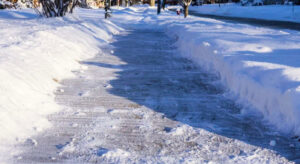 Snow removal is a big operation in many cities that get heavy snowfall. As soon as the first forecasts indicate a snowfall, public works teams prepare.
Snow removal is a big operation in many cities that get heavy snowfall. As soon as the first forecasts indicate a snowfall, public works teams prepare.
Parking lots and other areas that are accessible to the public must be cleared of snow after a storm. City ordinances usually specify a time frame within which this should be done. Check out this website at https://vantaoutdoors.com/snow-removal/ to learn more.
Stage 1: Alert
During the alert stage, public works teams begin snow removal work as soon as weather forecasters start reporting potential winter storms in our area. The first priority is usually the primary snow routes, which are roads that must be accessible for emergency vehicles and ensure free traffic flow throughout the city. These streets are treated with salt or a combination of chemicals, if needed.
Sodium Chloride is the preferred method of chemical treatment because it melts snow and ice faster, reduces equipment wear-and-tear, and helps to prevent road surface damage from abrasion. It is also safer for the environment, pets and plants.
During the alert phase, crews will continue to monitor roadway conditions and treat as necessary until all priority one routes are clear of ice and snow. During this time, it is best to limit travel to essential trips only. Please call 311 to report slick or missed roadways after it has been at least 24 hours since snow stopped falling. Thank you for your patience as we work to provide safe and reliable transportation services.
Stage 2: Primary Routes
In addition to plowing, many roads are treated with salt or a combination of other materials in an effort to prevent and reduce the formation of ice. These materials generally fall into two categories: chemical and inert. Chemical treatments (including the application of salt) induce a freezing point depression, which lowers the temperature at which snow and ice melt. Inert treatments (such as the application of sand, brash or slag) make the surface irregular to improve traction once the road is clear of snow and ice.
Priority plow routes are designated for specific traffic volume needs, such as high-traffic volume links between major centers of activity and local neighborhoods, transit and school bus routes, and known problem areas (e.g., curves, steep grades and bridges). These routes are plowed first to allow emergency vehicles and commuters to access the roadway.
Once these areas are cleared, crews begin working on secondary roads and then local access roads that lead to residential homes. The goal is to plow all roads in the system within a reasonable time frame after a significant snowfall. This may take several days, depending on the duration and intensity of the storm.
While a large amount of the roadway is being cleared, crews are also responsible for clearing city sidewalks and alleys. These efforts are geared toward making streets accessible to pedestrians, including children who walk to schools.
When snow is removed from the roadway, it is normally pushed to the center of the traveled way and to both sides in order to ensure that there is sufficient clearance for vehicles traveling in each direction. The exception to this is in the case of cul-de-sacs, where the snow is pushed back into the center to facilitate turning movements.
As snow removal operations continue, city plows are equipped with blades that can also apply traction materials to the roadway. These materials can be placed on the roadways before or after snow removal. Traction materials are most effective when used as a pretreatment before snowfall, but can be applied afterward as well. This is a key element in the safety of pedestrians and motorists alike. This is particularly important in intersections, where traction material helps vehicles to stop or turn on time and to negotiate the curve of the road. It is also used on problem roads that have steep inclines, curves or bridges, and in areas of heavy traffic.
Stage 3: Residential Streets
During the residential streets stage, snow crews clear neighborhood streets and roads that connect to major arterial and collector routes. These streets are usually plowed, treated with de-icing chemicals or with inert materials, and abrasive salt may be used to help remove ice from the roadway. These treatment options are carefully weighed in terms of their impact on the environment, their effect on vegetation and animals, the ability to be removed or recycled, and their effectiveness with regard to temperature and speed.
In addition to the usual traffic flow of cars and buses, residential streets often see increased use by trucks that service private properties. This includes trash pickup, heating oil delivery and moving vans. In order to ensure safety and access for these vehicles, these roads must be kept free of ice and snow, so that they can easily turn left into driveways or the street. This process is difficult and time consuming, especially when the weather is cold and snowy.
While the goal is to treat and plow all streets, it cannot always be done immediately after a snowfall. Some areas have to prioritize the clearing of the largest roads and highways; roads with steep hills or other dangers are also given higher priority. Additionally, some communities have standing snow emergency rules during winter in which automobiles are not allowed to be parked on the street.
Many low-volume residential streets operate informally as shared spaces. By designing these streets to maintain low speeds and volumes, cities can reinforce their shared nature with street furniture, markings and other design features that subtly define a space that is shared by both pedestrians and vehicles.
